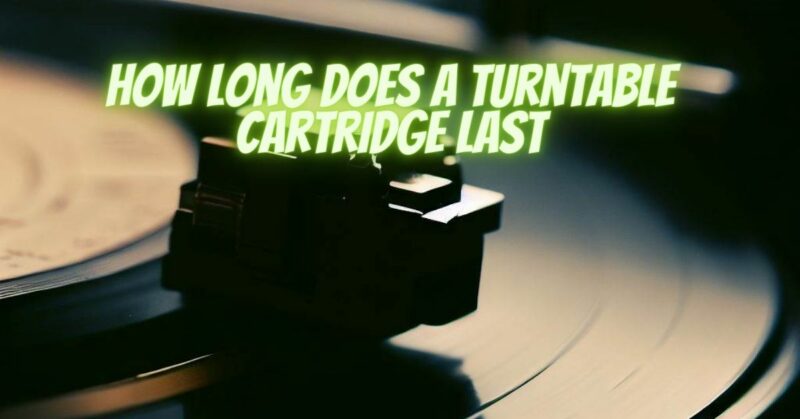The turntable cartridge is a crucial component responsible for translating the grooves on vinyl records into audio signals. As with any mechanical component, turntable cartridges have a limited lifespan. In this article, we will explore the factors that affect the longevity of a turntable cartridge and provide insights into how long you can expect it to last before requiring replacement.
- Usage and Playing Time: The lifespan of a turntable cartridge largely depends on the amount of use it receives and the playing time accumulated. Cartridges that are used frequently and for extended periods may wear out faster compared to those used sparingly. Heavy use and continuous playing can put more stress on the stylus and suspension system, leading to faster wear and degradation of performance.
- Tracking Force and Alignment: Proper setup and adjustment of tracking force are critical for the longevity of a turntable cartridge. Excessive tracking force can cause premature wear on the stylus and groove walls, while insufficient tracking force can result in mistracking and potential damage. Similarly, incorrect alignment between the cartridge and the tonearm can put additional stress on the stylus and affect its lifespan. Regularly check and adjust the tracking force and alignment according to the manufacturer’s recommendations to ensure optimal performance and longevity.
- Stylus Care and Cleaning: Taking proper care of the stylus is essential for prolonging the life of a turntable cartridge. Clean the stylus regularly using a stylus brush or cleaning solution designed for this purpose. Removing dust, debris, and residue from the stylus helps maintain its tracking ability and prevents unnecessary wear. Handle the stylus with care and avoid accidental impacts or mishandling that could cause damage.
- Quality of Vinyl Records: The condition and quality of the vinyl records you play also impact the longevity of the turntable cartridge. Records that are dirty, scratched, or damaged can cause increased wear on the stylus and groove walls. Clean your records before playing them and handle them carefully to minimize potential damage. Avoid playing records with excessive surface noise or deep scratches that can negatively affect the cartridge’s performance and longevity.
- Manufacturer and Build Quality: The build quality and design of the turntable cartridge itself play a significant role in determining its lifespan. Cartridges from reputable manufacturers with a history of producing high-quality audio equipment tend to have better longevity compared to cheaper or lower-quality alternatives. Investing in a well-built cartridge from a trusted brand can contribute to a longer lifespan and better overall performance.
- Signs of Wear and Replacement: Over time, a turntable cartridge will exhibit signs of wear and degradation. These signs may include increased distortion, reduced high-frequency response, tracking issues, or audible wear on the stylus. If you notice any of these signs or experience a decline in audio quality, it may be time to consider replacing the cartridge. However, the actual lifespan of a cartridge can vary greatly depending on the factors mentioned above and individual usage patterns.
Conclusion:
While the lifespan of a turntable cartridge can vary depending on factors such as usage, tracking force, stylus care, record quality, and build quality, a well-maintained cartridge can typically last several hundred to a few thousand hours of playing time. Regular maintenance, proper setup, and adherence to manufacturer guidelines will help prolong the life of your cartridge. If you notice any significant degradation in performance, it’s advisable to replace the cartridge to ensure optimal sound reproduction and an enjoyable vinyl listening experience.

